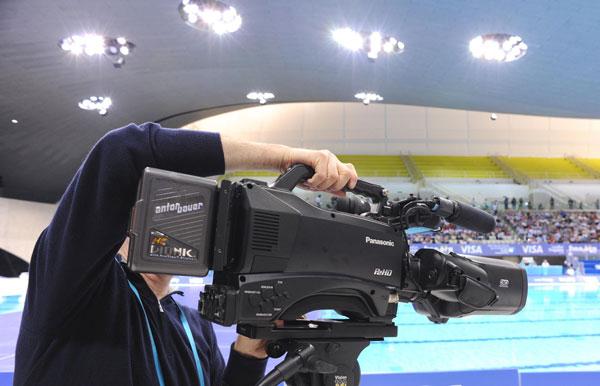Olympics in 3D

These cable, satellite, and telco providers include:
- Armstrong
- AT&T U-verse
- Blue Ridge
- Bright House Networks
- Cablevision
- Comcast
- Cox Communications
- DirecTV
- Insight
- Mediacom
- RCN
- Suddenlink
- Time Warner Cable
- Verizon FiOS
- WideOpen West
In total, there will be about 242 hours12 hours per dayof 3D coverage from NBC and Panasonic, which provided the 3D cameras and production equipment. Unfortunately, this coverage will be delayed by one day in relation to the 2D coverage (which, of course, will itself be delayed in the US because of the time difference with London). As today's press release says, "Viewers who watch the award-winning primetime coverage on NBC will have the opportunity to go back and relive their favorite events as never beforein Full HD 3D."
According to Panasonic, the decision to delay the 3D broadcasts was made by NBC for business reasons rather than any technical issues. I hope to talk with someone at the network to find out why they chose to do it this way, though most of the people that can provide any real insight are probably already in London, which will make it more difficult to get quick answers.
In my view, the extra delay undermines the effort to promote 3D broadcasting to a wider home audience. Avid viewers will not want to wait a day to see the events, and those who watch the primetime coverage in 2D aren't likely to watch it again the next day in 3D, especially if the 3D programming from the day before coincides with the more recent 2D coverage. The 3D content will be on a different channel, so why can't it be available at the same time as 2D? I hope to find an answer to that question in the days ahead.
Also, calling it "Full HD 3D" is a bit of a misnomer. While the acquisition and production will be full HD (1920x1080) for each eye, the final broadcast won't, since the vertical or horizontal resolution will be cut in half for each eye using either the "over-under" or "side-by-side" format so the signal fits in the standard bandwidth for a single broadcast channel. Each carrier will decide which format to use, but Panasonic speculates that most will use side-by-side. Virtually all 3D displays can accommodate both formats, so it really doesn't matter.
As we've seen with passive-polarized 3D flat panelswhich cut the vertical resolution in half for each eyethe perceived detail will likely be better than you would think because the brain fuses the two images into one stereoscopic image at full resolution. Still, I wonder how it will look on a passive-polarized flat panel with the side-by-side format, in which case both the horizontal and vertical resolution will be cut in half for each eye.
In any event, I will be watching the 3D coverage from DirecTV on a Sony VPL-VW95ES 3D projector with active-shutter glasses and a 60-inch-wide Screen Research ClearPix 2 screen. (Yes, that's a small screen, but my seating distance is only eight feet, which is just about perfect for a screen of that size.) I'm especially excited about the opening and closing ceremonies, gymnastics, diving and swimming, cycling, and track and field events, all of which will include 3D coverage. And I'll be reporting on my experience right here, so stay tuned!
























































